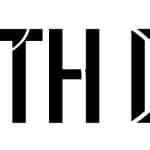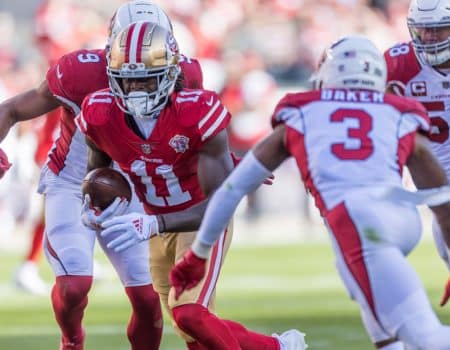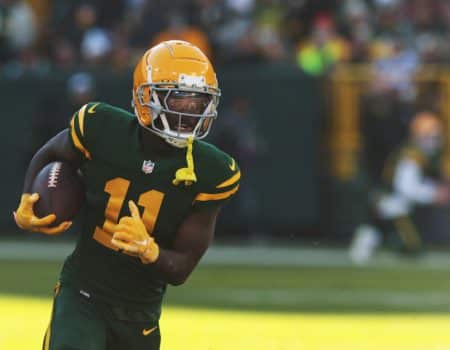This article first appeared on RotoBaller.com
By Adam Hall (@adamaaronhall)
Todd Gurley was the 10th overall pick in the 2015 NFL draft. At the time, Gurley was hailed as the best back to come out of college since Adrian Peterson. Gurley was drafted to be an every-down, featured back, and is one of the few backs in the NFL to live up to that designation.
According to the snap count through the first three weeks of the year, Gurley is one of seven running backs who receives a vast majority of his team’s snaps weekly. This alone shows that Gurley is likely to be a top back as the sheer volume will lead to solid numbers.
Beyond that, Gurley proved himself once again with his performance on Thursday where he racked up three touchdowns and 149 yards from scrimmage. Is it possible he bounces back from being a dud last year to the top RB in all of fantasy football, where he was projected to be all along?
[sc name=”Google Inline Ad”]
Why is this year different?
Gurley was the undeniable bell cow back for the Rams last year, but barely classified as an RB2. What changed so drastically in an off-season to turn him into a top-five back? The Rams have changed their entire coaching staff, leading to a new offensive regime, and with it a new sense of creativity that has allowed Gurley to compete at the level that he is accustomed to. To give you an appreciation for how bad Jeff Fisher was, four of the 12 worst statistical seasons by a bell cow running back (minimum 275 carries) in NFL history were coached by Fisher. Fisher refused to adjust to new defensive schemes, and it consistently produced mediocrity on offense at best.
To suit a young team, the Rams hired one of the youngest coaches in NFL history. New head coach Sean Mcvay has been the Redskins’ offensive coordinator since 2014, during which the Redskins had the best offensive year in their franchise history. Furthermore, former Falcons QB coach Matt LaFleur has taken over the offensive coordinator duties. Continuing with the pattern of gathering the best coaches in the NFL, the defense will now be called by possibly the greatest DC ever in Wade Phillips. This coaching staff turn around has immediately reinvigorated the Rams leading to a solid offensive start, Jared Goff has already increased his quarterback rating by 40 points (63.6 vs. 103.2), and Gurley’s performance has rebounded with it. Finally, the Rams have improved their bottom tier offensive line with stalwart left tackle, Andrew Whitworth. Even though he hasn’t yet played up to his top of the league standards just yet, he’s a decided upgrade over former second overall pick Greg Robinson. The offense as a whole has changed, and teams can no longer stack the box like they did in 2016. Without having to put the entire team on his back, Gurley has a chance to play like we all want him to.
Why will he produce as a top-five RB?
To answer this question, we must look through who are currently the top twelve projected backs. Since David Johnson is out for much of the fantasy season, along with Howard and Murray largely losing their featured back status, we can safely deduce they won’t be in the top 12. This leaves: Le’veon Bell, Ezekiel Elliott, LeSean McCoy, Melvin Gordon, Jay Ajayi, Ty Montgomery, Carlos Hyde, and Devonta Freeman as the viable backs that could achieve top-five status.
Freeman has a significant time share with Tevin Coleman which will lead to lapses in production that will likely drop him into the back half of the top 12 this year. Carlos Hyde is in a horrible situation with a schedule that’s even more difficult than the Rams. The 49ers have just begun their rebuild, and general manager John Lynch said it best in his recent statement, “I’m sorry to say that our roster just isn’t where it needs to be to overcome mistakes. We have to play near-perfect.” Hyde can’t play perfectly on an every week basis, and that’s what he’d need to do to be a top-five back. Ty Montgomery is a part of the bittersweet reality of being in a prolific offense. The Packers have numerous options to go to in every part of the field. The percentage of their offense isn’t devoted enough to him to produce a true workhorse.
Why does Gurley beat out Ajayi and Gordon?
To answer this question, the play styles and opportunities of the three players must be compared. Jay Ajayi has the possibility to hit more than 300 carries this year and in his first game he averaged over 4.3 yards per carry on a whopping 28 carries. Unfortunately, Ajayi was only targeted twice all game, which only amounted to two catches for four yards. If this is a reflection on how Gase and the Dolphins plan on using Jay Ajayi, he can be penciled in for a few major games where he underperforms. This has much to do with the Dolphins’ defense. According to ESPN’s stats, the Dolphins were ranked 29th in overall defense last year, they allowed the third-most yards per game on the ground and were below average at stopping the pass. Things haven’t gotten better; first round pick Charles Harris was manhandled in his first game, and second pick Raekwon McMillan tore his ACL earlier this year and won’t be any help. With Lawrence Timmons leaving the team, the Dolphins may have a bottom-five defense again this year. This means that any team with sufficient firepower will blow past the Dolphins which will render Ajayi nearly useless. Furthermore, in PPR formats Jay’s lack of targets will undercut his weekly upside and will have to rely on touchdown production to jump into the top ten running backs. There are just too many factors working against Ajayi for him to be a top-five back this year.
Gordon is a bit more difficult to explain away. To do this we need to look at the production of the two backs. Even in what many would call a worse offensive situation, Gurley has out-performed Gordon across the board.
The Chargers haven’t built enough protection for Rivers and Gordon. The Chargers’ offensive line is even worse than the Rams’, as their average player grade on their line according to Profootballfocus.com is 48.34, compared to the near 58 grade the Rams achieved thus far. Neither of these scores are good, but one is absolutely putrid while the other is only below average. It would make sense that both lines could improve throughout the season as they gain more cohesion and understanding of their teammates, but the Rams are ahead and are on pace to maintain that standard.
Down to brass tacks, here’s a table comparing the two backs across all the pertinent factors over the first two weeks.
| Standards (per game average) | Todd Gurley | Melvin Gordon |
| Rushes per game | 17.5 | 13.5 |
| Yards per carry | 3.66 | 2.48 |
| Targets per game | 5 | 7 |
| Catch Rate | 80% | 85% |
| Yards per catch | 13.5 | 7.5 |
| Percentage of team targets | 20+% | 19.4% |
| TDs per game | 2.5 | 1.5 |
On Thursday, Gurley went on to outdo or maintain each of the scores above, with 28 rushes, four yards per carry, seven targets, 11.2 yards per catch, a 70+% catch percentage, 25% of the team’s targets and three touch downs. Gurley isn’t slowing down, he’s only getting better as his situation improves.
On a comparison basis, the numbers speak loud and clear, Gurley is the superior back. Gordon may get more targets currently, but as Goff becomes more comfortable with the offense and is asked to throw more, Gurley will get more receptions with it. This is clear as in the first two games Gurley was targeted more often as a percentage of the overall throws than Gordon was. Gurley averaged just over 20% of Goff’s targets. Out of 49 targets, 1/7th have gone to Sammy Watkins, 24.5% to Cooper Kupp, four to Everett, and four to Higbee = 16.3% (together). Over the first two games Gurley was the second most targeted player on the team and has been targeted more than all the tight ends combined. Goff is only throwing around 26 balls a game currently, this is bound to increase throughout the season, and Gurley’s productivity with it. Although these players are similar in age, play style and production there are a couple major factors that undercut Gordon’s position.
After the third game, Gurley not only is a 20+ carry back, but also leads the Rams in targets and receptions where he averages more than 8.2 yards per target and nearly 10.8 yards per reception.
If Gurley can maintain a substantial fraction of this production, it will be hard to argue with the idea of him being a top five running back.
[sc name=”Google Matched Content Ad”]





